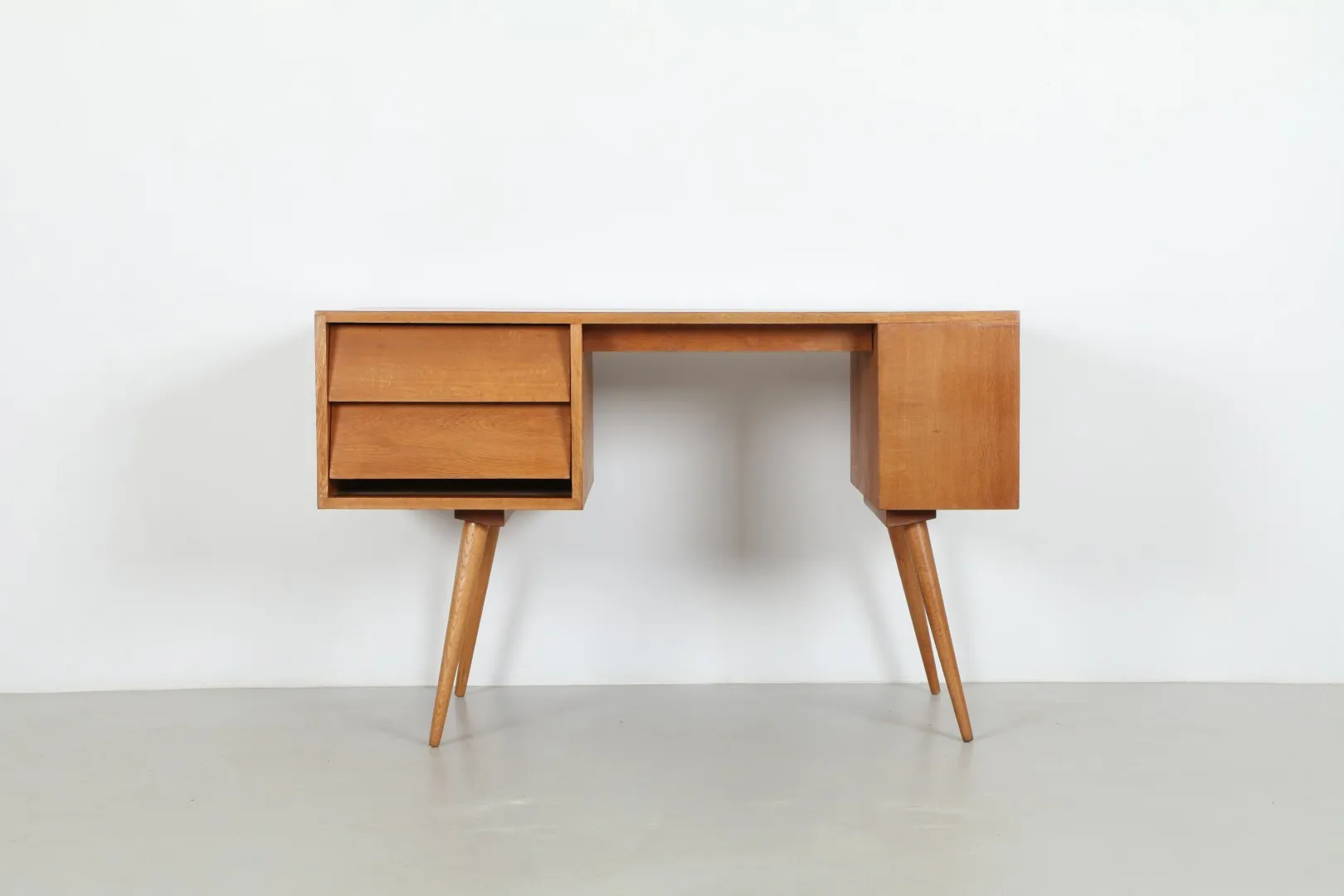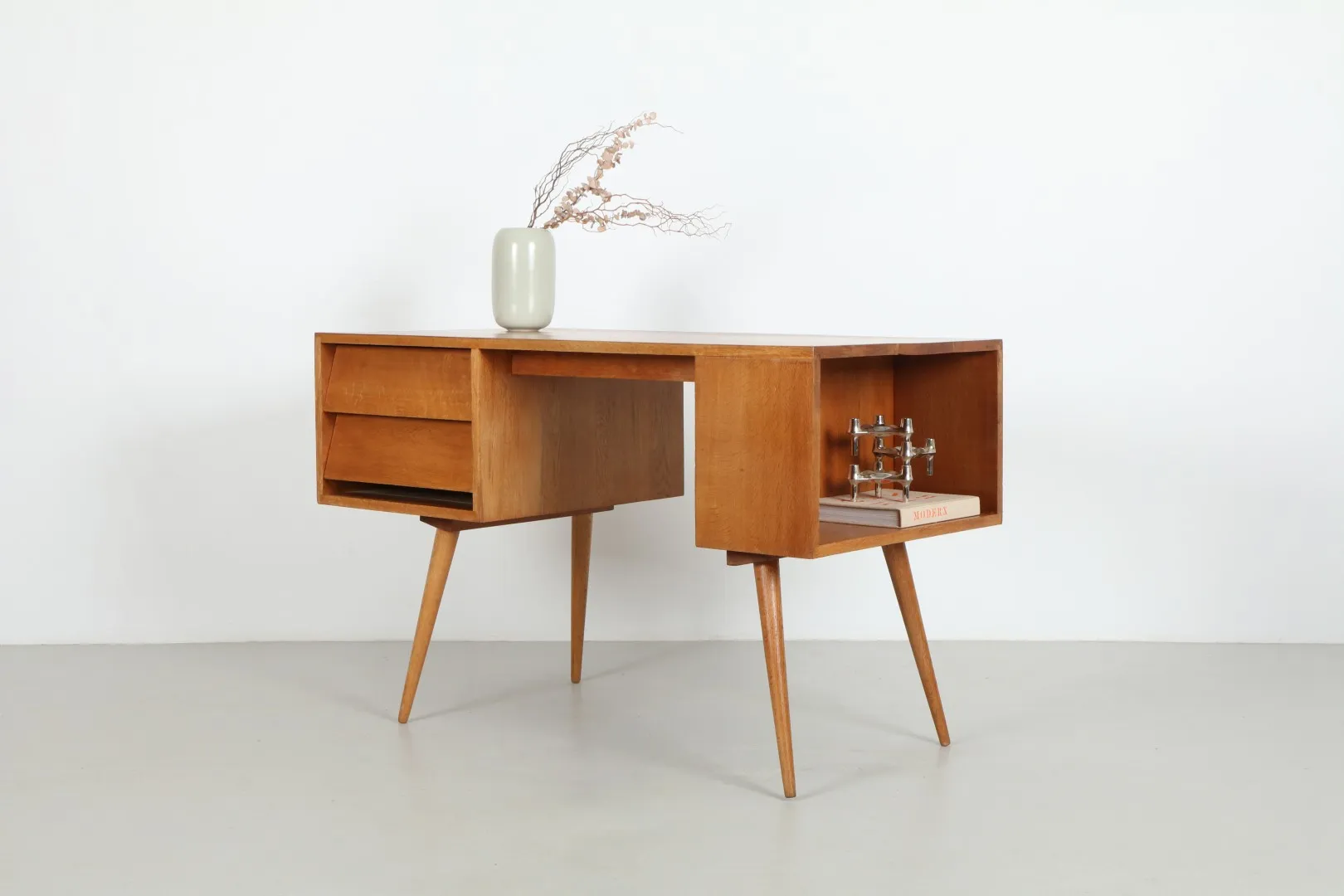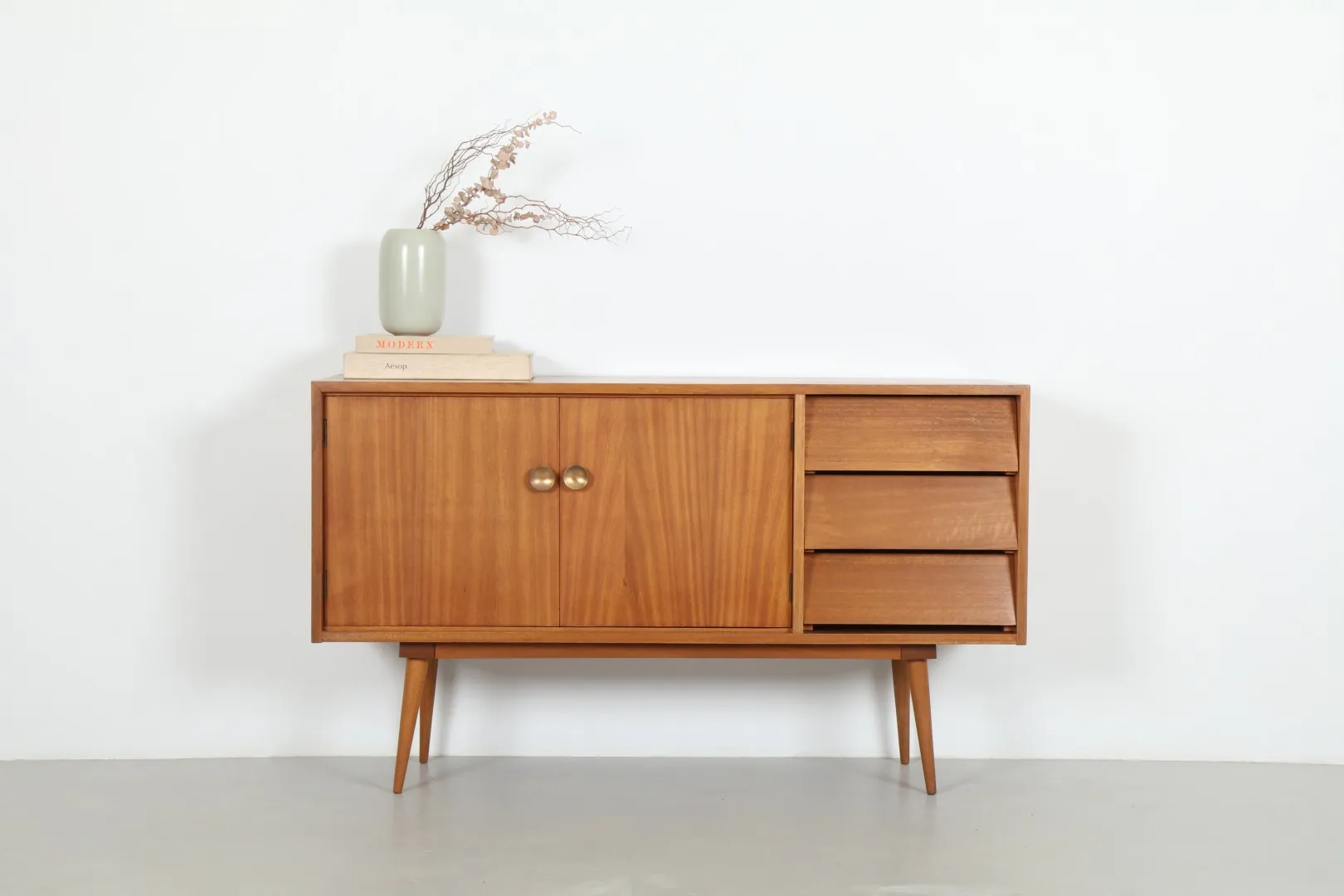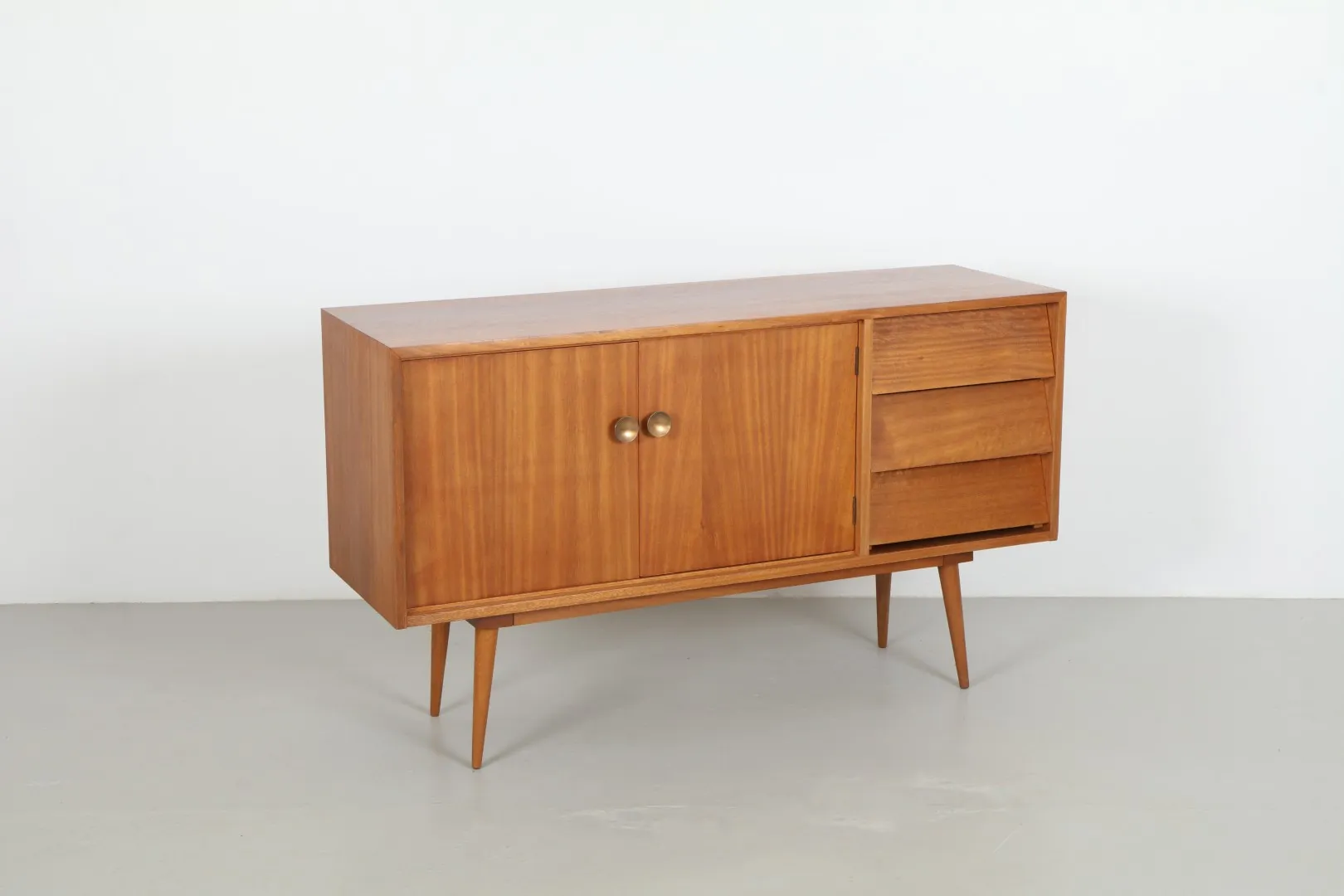.svg)
Dutch emigre, Edzer Duije (Bob) Roukema played a dominant role in introducing the New Zealand public to modern furniture and design ideals in the mid-20th century. Roukema's impressive work with pioneering contemporary design store Jon Jansen was pivotal in giving a voice to the emerging international ideas of modernism and creating locally accessible contemporary furniture for a New Zealand audience.
An influential feature of Roukema's education was the study of the history of art and design. On entering the workforce, Roukema became a designer for the well-known Hoogsteder Furniture Company, and also worked for the J.P. van Eesteren Company (contractors for Europe’s then largest building, in Rotterdam), he developed many outstanding designs during this time. One of his first big assignments in Holland was designing a large house boat (1,500 sq. ft.). It was built of timber, on a steel pontoon and featured a decadent parquet floor and central heating.
In 1944 Roukema escaped Nazi occupied Holland and made his way to England where he joined the Dutch Merchant Navy. He served there on convoy duty until the end of the war. In off-duty hours, he kept up his study of interior decoration and industrial design, and during furloughs attended the Academy of Fine Arts in Rotterdam, specialising in design.
Roukema emigrated to New Zealand in 1951 and stayed in the furniture industry. In early 1952 he joined Auckland furniture store Jon Jansen which specialised in furniture by contemporary designers. Roukema’s wide experience in the furniture industry, combined with his well-developed creative ability allowed him to design some of Jon Jansen's most memorable and coveted pieces. Roukema designed most of the furniture for the store until departing in 1959.
Aware of the need to promote modern furniture in a conservative environment, Roukema spent a substantial amount of time working with architects and interior designers, to fit out hotels, airports, clubs, and other venues such as the Playhouse Theatre (later Mercury). Architects directed much of their clientele to Jon Jansen and the furniture could be seen in the pages of 'Home and Building', 'Design Review' and 'New Zealand Modern Homes and Gardens'.
Although indebted to overseas designers, Roukema produced a wide range of original work. His designs often incorporated acute angles rather than relying on the strength of traditional forty-five-degree angle joints. Roukema would take his ideas to Jon Jansen factory manager Arnold Graves, and together they would bring his designs into production. Graves recalls many compromises needed to overcome the technical problems that arose from Roukema’s interest in the fine line, difficult to achieve with available materials and equipment.
One of the significant innovations for New Zealand construction techniques was the previously unseen, but now ubiquitous, screw-in wooden leg. The Jon Jansen factory designed the manufacturing technique then worked with Joe Cross from Woodturners to develop equipment to manufacture the legs. Woodturners then produced and sold the system throughout the country.
Roukema left Jon Jansen in 1959 and moved to New York with his wife. While there he unfortunately became ill with multiple sclerosis and decided to return to the Netherlands where he spent his last few years. While in New Zealand Roukema played a significant role in popularising modern furniture in a very conservative environment. This paved the way for several subsequent design stores and influenced many future designers.
Today Bob Roukema designs are featured in the permanent collection of most New Zealand museums and are highly coveted by collectors of modernist design.
References: 1. Home and Building 1953, 2. Tanya Wilkinson essay, included in Modern New Zealand magazine, edited by Douglas Lloyd Jenkins and published in 1995
























